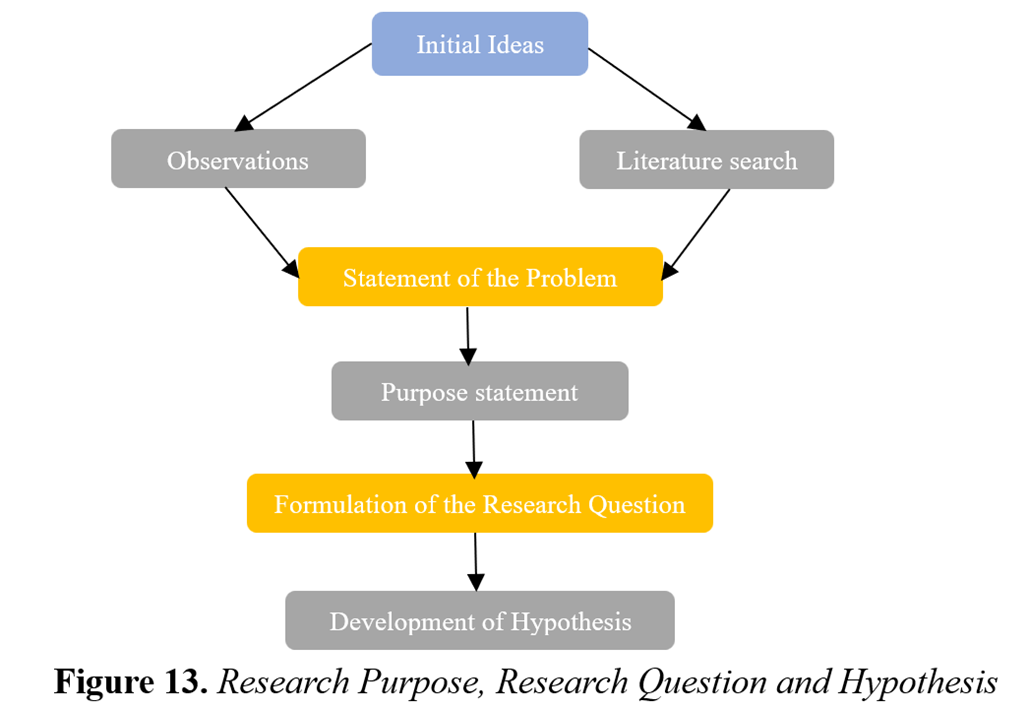Information

The research purpose serves as a statement explaining why a study is being conducted and what the study aims to achieve. It typically involves identifying, describing, explaining, or predicting a specific concept, situation or solution. The purpose statement is important because it clarifies the variables, population, and setting for the study, and it is usually derived from the research problem. The purpose statement must be objective and free from any researcher's biases or values to ensure the research is credible and trustworthy. Typically, the purpose statement comes after the research problem and supports it by clarifying the knowledge generated through the study (Durand, 2023).
Quantitative research is rooted in deduction. This type of research is guided by theory, meaning it begins and ends with theory. Before embarking on any research project, researchers need to become acquainted with the relevant literature. This involves understanding the established theories and explanations about the phenomenon being studied and identifying gaps or controversies in the existing knowledge (Fig. 13.). By utilising this knowledge, researchers can develop hypotheses to address these gaps or controversies. The primary aim of quantitative research is to test existing theories using new quantitative data to establish the limits of a theory or determine the conditions under which it applies. Regardless of the research question, it must always be derived from the theory. A well-formulated research question should be pertinent and have the potential to make a theoretical contribution to the literature. It should either add to, modify, challenge, or fill gaps in the existing theory or controversies (Stockemer, 2019).

A well-crafted research design is the key to efficient and cost-effective research without compromising the accuracy of findings. It lays the foundation for the entire research journey and ensures that all aspects of the project are meticulously planned to yield valuable insights. With a solid Research Design in place, scaling becomes effortless, and resources are allocated judiciously, thus making it an indispensable element in accomplishing research objectives.
Proper research design is also crucial when mapping out methodologies for collecting pertinent data and analysing techniques while considering research objectives, staff time, and budgetary constraints. Failing to prepare a research design properly can harm the entire project (Pandey & Pandey, 2015).
Research design is like a blueprint for seamless research operations, much like a blueprint or map is necessary for a house's efficient and aesthetically pleasing construction.
Furthermore, research design offers an overview of the research process, allowing field experts to provide valuable input. It also assists investigators in organising their thoughts and identifying any potential flaws.
Ultimately, research design provides a clear trajectory for all parties involved in the research project, guaranteeing a coordinated and successful outcome.